What Is the Amami World Heritage Site?
UNESCO Registration and Its Meaning
The World Heritage refers to sites recognized by UNESCO for their exceptional value to humanity. They are divided into natural and cultural heritage. Natural sites preserve outstanding landscapes and biodiversity, while cultural sites include monuments and historic places with universal significance. The designation emphasizes global commitment to their protection.
Where Are the World Heritage Areas in Amami?
The World Heritage site on Amami Oshima is entirely covered by forest, constituting approximately 16% of the island’s total area. The dark green areas on the map indicate the World Heritage site, while the light green areas represent the buffer zone.
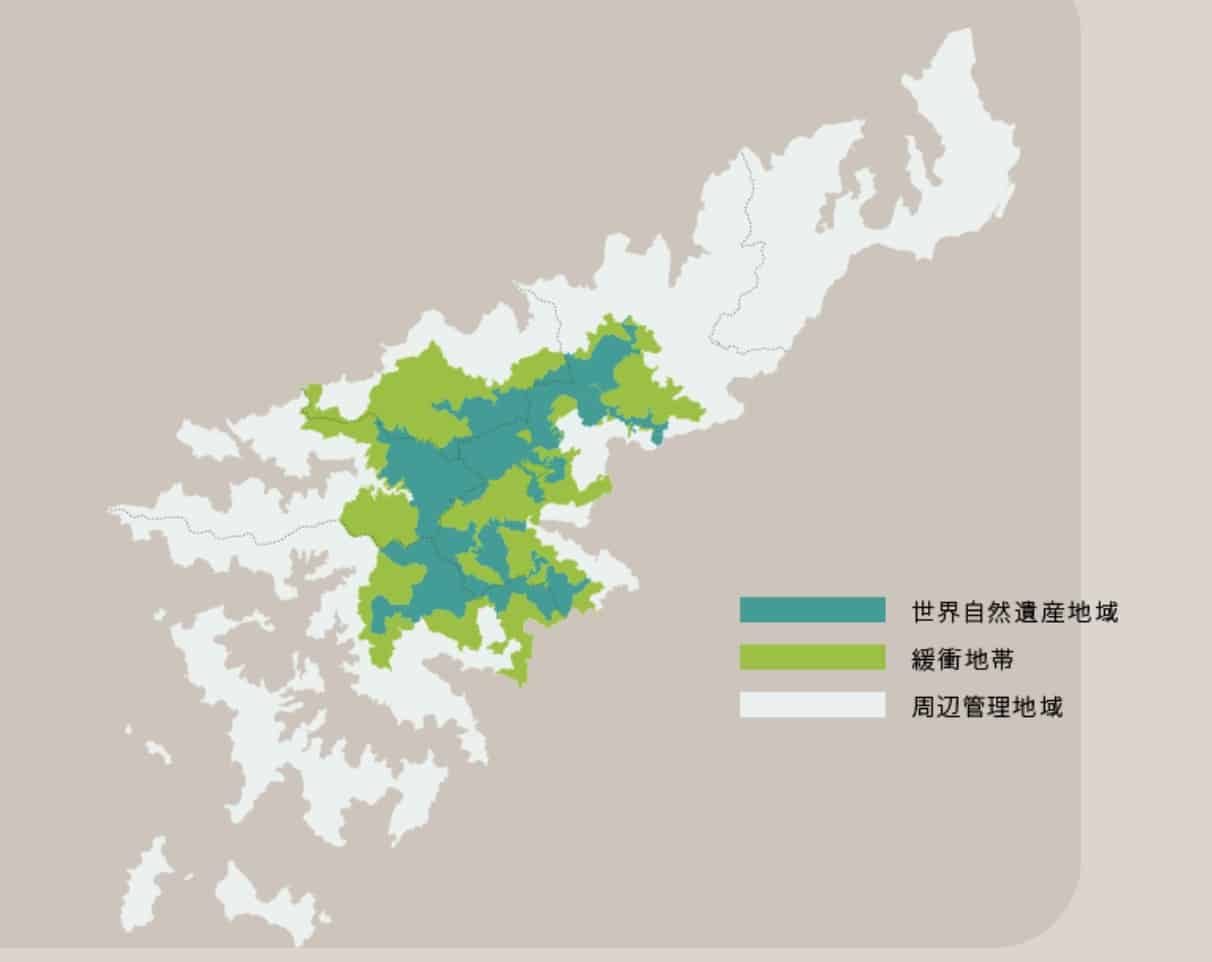
Why Amami Was Chosen as a UNESCO Natural World Heritage Site
Amami Oshima, along with Tokunoshima, the northern part of Okinawa Island, and Iriomote Island, was designated as a UNESCO Natural World Heritage site in 2021. It is the fifth site to receive this designation in Japan.

The reason for the designation is its biodiversity. Having evolved after being connected to the continent in ancient times, the island preserves species that have become extinct on the continent and showcases the adaptation and evolution of flora and fauna to the island environment. Preserving the genetic diversity of these species for the future is a significant aspect of its designation as a World Heritage site.
Flora and Fauna You Can Encounter
Amami Rabbit
Amami rabbit is known as a “living fossil” existing for about 300 years. They inhabits both Amami Oshima and Tokunoshima Island. They have maintained almost the same appearance since ancient times and continue to survive to this day.
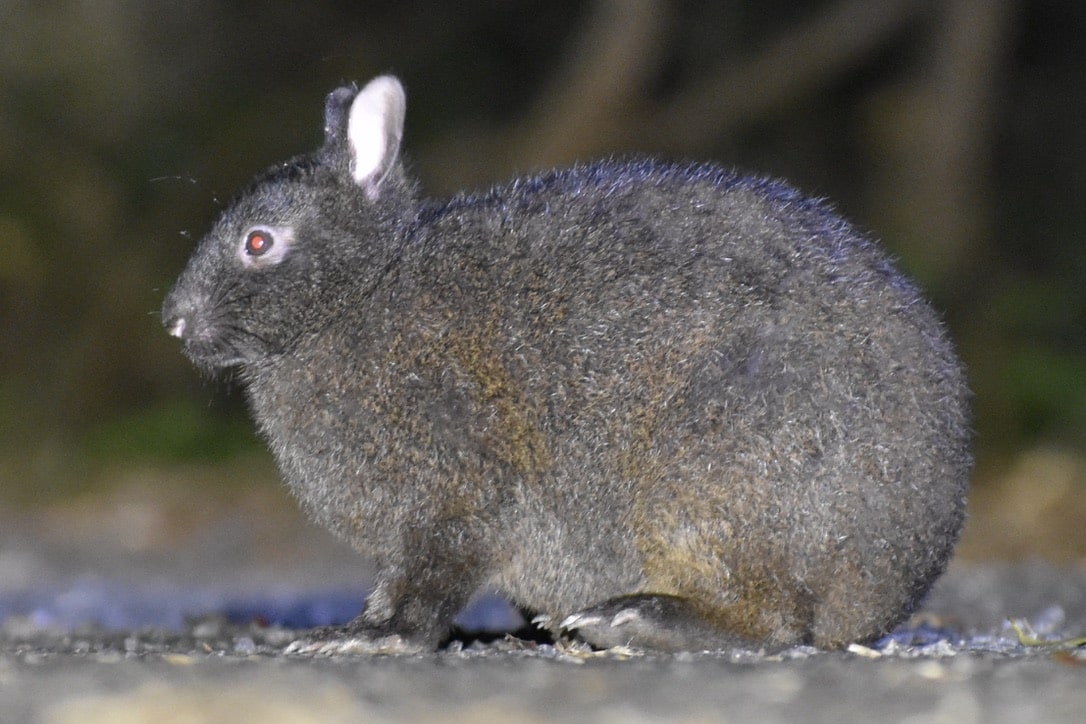
Amami Ishimawa’s frog
Amami Ishikawa’s frog is known as Japan’s most beautiful frog and is found exclusively on Amami Oshima. Its distinctive features include a vibrant green body with black and golden dots. The reason for its reputation as beautiful is also attributed to its unique vocalizations, producing surprisingly high-pitched sounds that one might not associate with a typical frog.
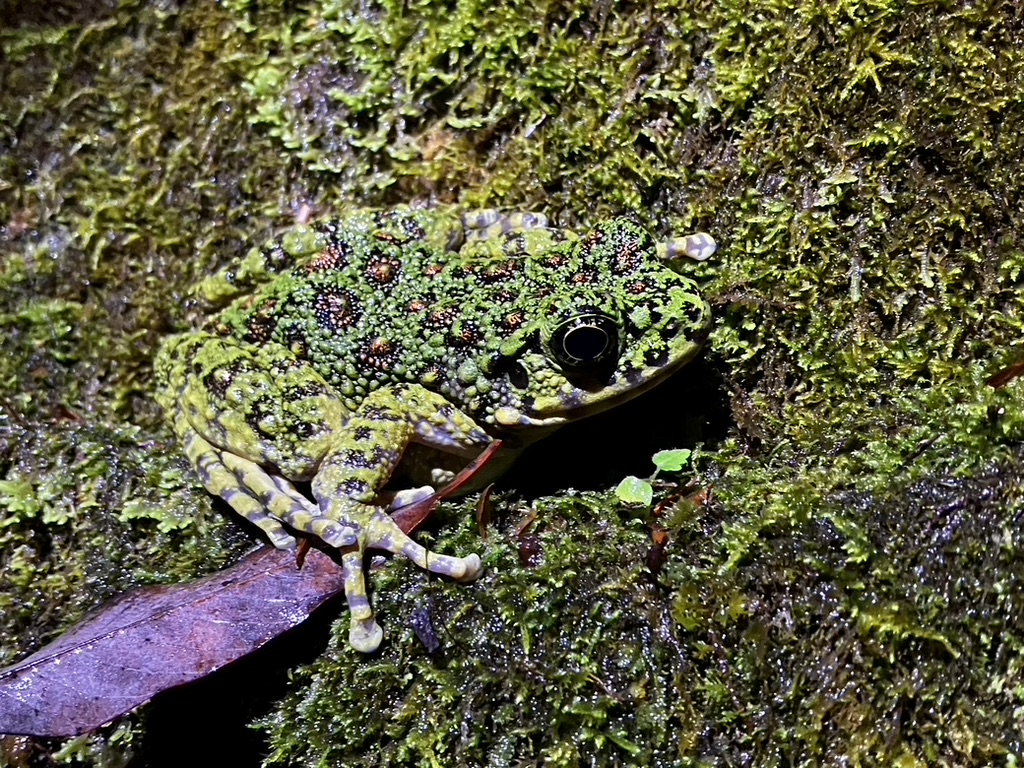
Amami Jay
As you walk through the forest, you may hear the sound of a woodpecker tapping on the trees. It could be the Amami white-backed woodpecker, digging nest holes in the wood or searching for insects inside. The males, with their beautiful redheads, are popular among bird watchers.
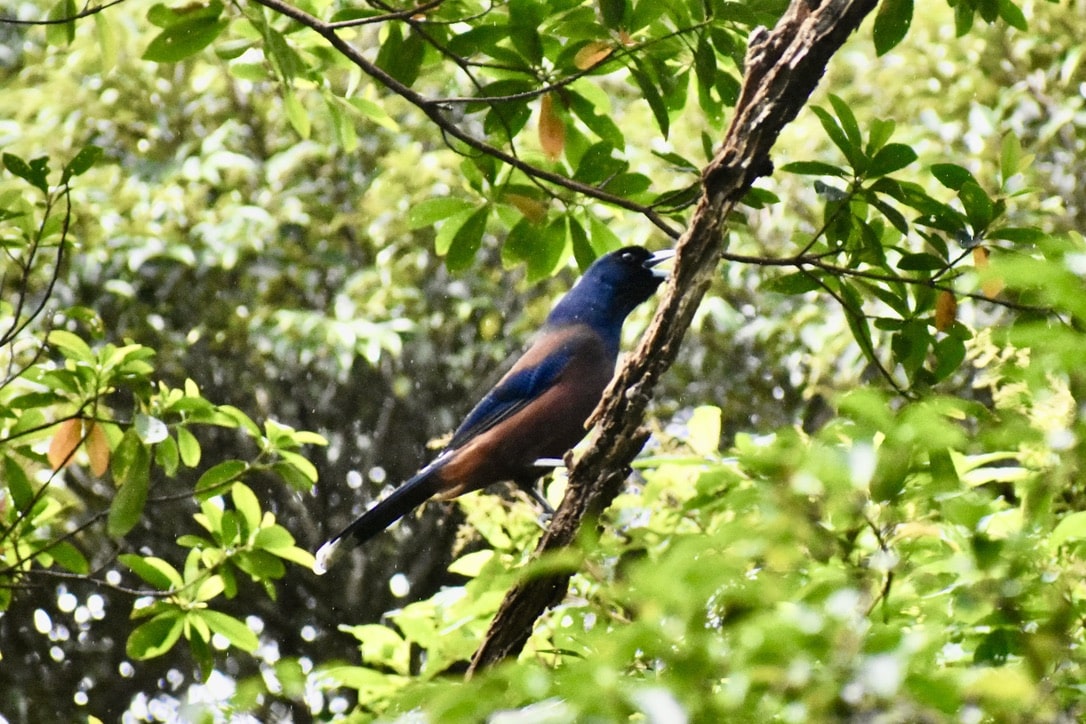
Crane Top Orchid
Amami Oshima is home to a rich variety of wild orchids, including many endemic species. One of the most striking is the Crane Top Orchid, named for its flower that resembles the head of a crane. Among Amami’s native plants, it stands out with its large and beautiful blooms.
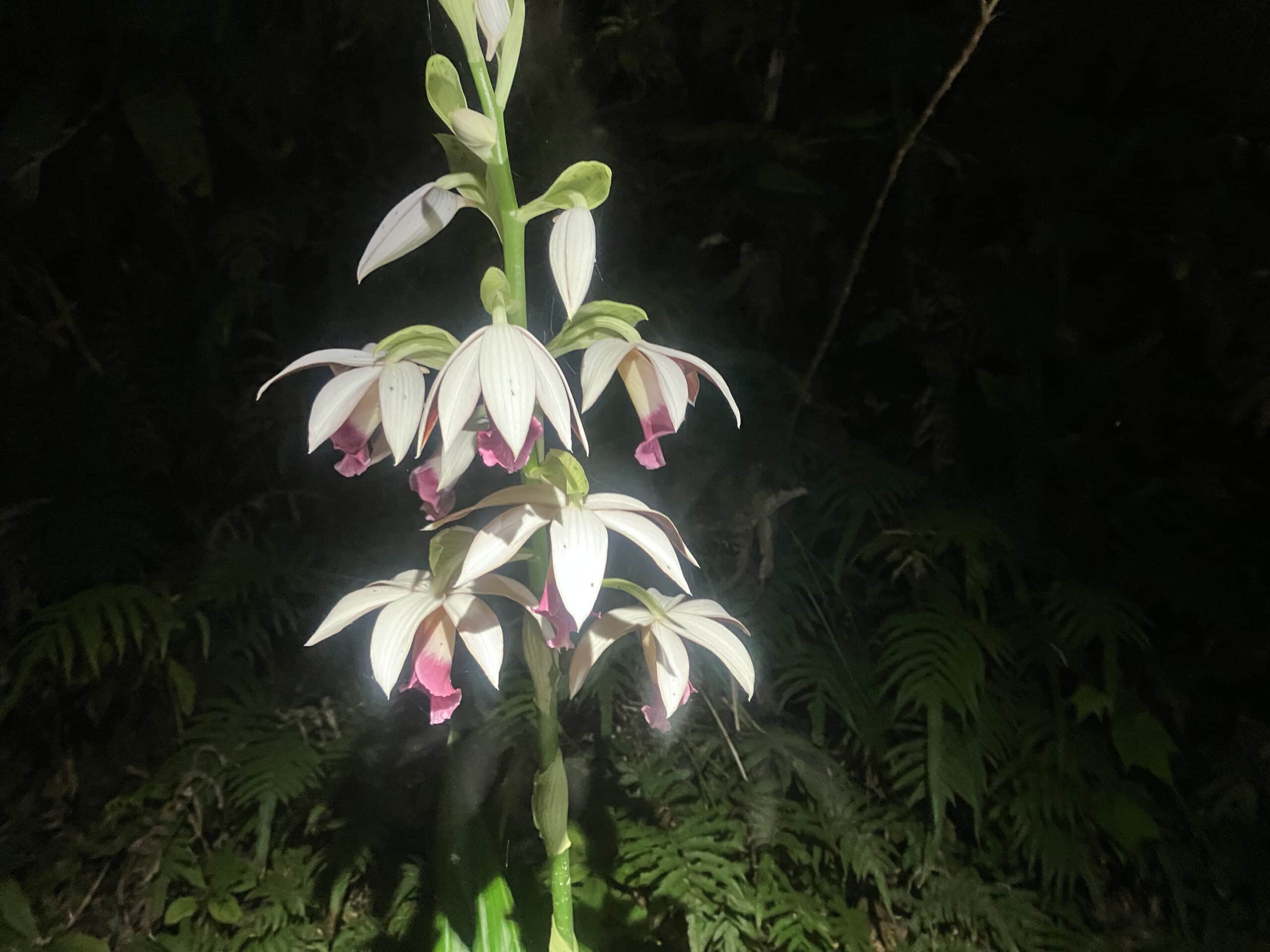
Miyabi Wild Ginger
Miyabi wild ginger is a unique plant that relies on ants to carry its seeds and expand its habitat. Consequently, it is said to take 100 years to extend its range by one meter. This plant is endemic to Amami Oshima.
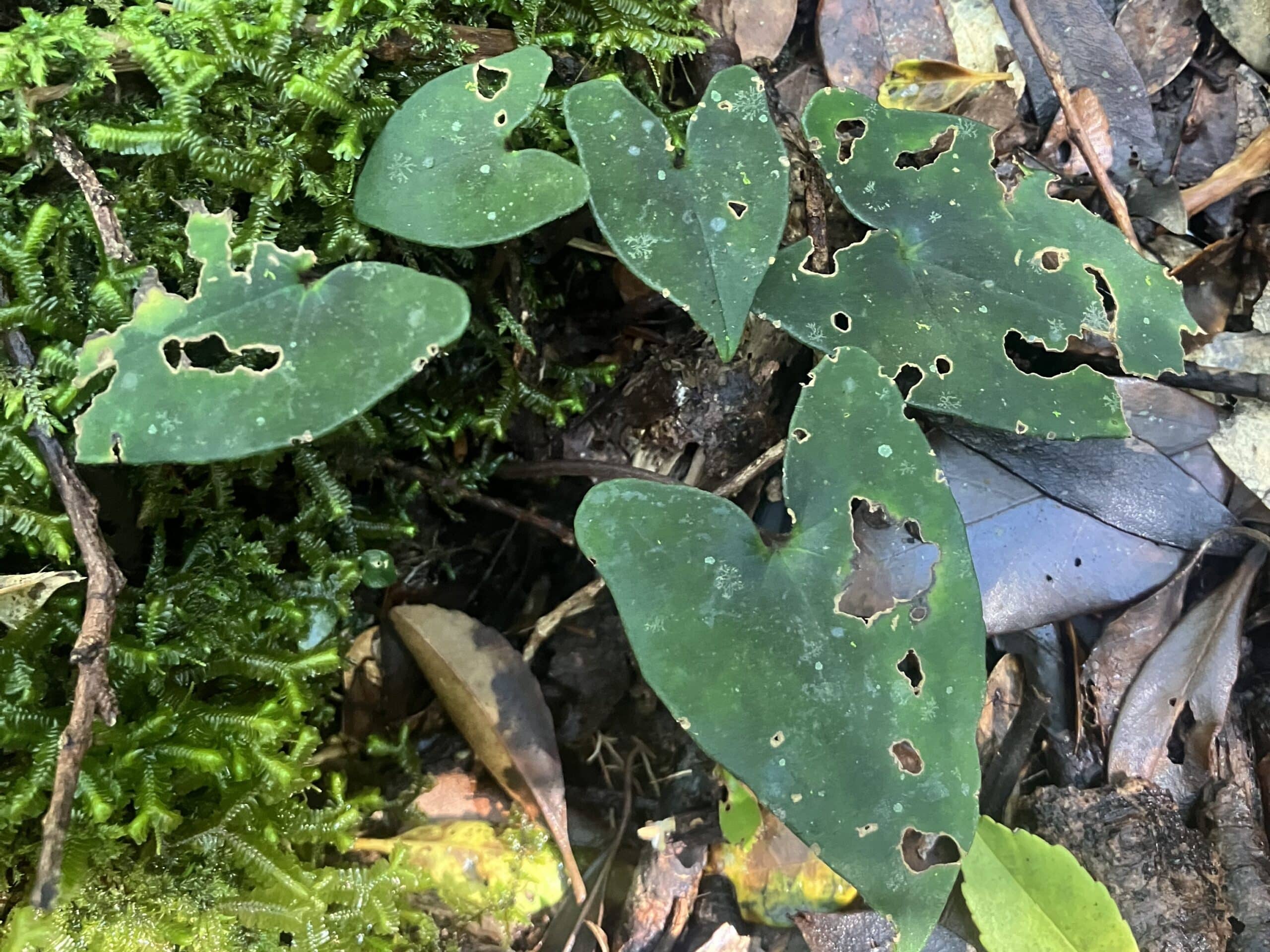
Conservation Efforts and Sustainability
Amami Oshima is a treasure trove of endemic species like those introduced above, making it a precious World Natural Heritage island. However, it’s also true that many of its plants and animals are now endangered due to poaching and environmental changes. The World Heritage areas are strictly managed by the Ministry of the Environment, and access is often restricted to protect the delicate ecosystem. At Link Adventures, we conduct tours that respect nature and aim to preserve it for future generations.
Join a Guided Nature Tour
Join an eco-tour to help protect Amami’s rich environment and preserve its precious nature for future generations.
The forests of Amami Oshima are full of charm, but they are also delicate and easily impacted. By exploring the forests, sea, and mangroves with a guide, you can minimize your environmental footprint and experience a truly mind-brewing experience. We’re here to make your trip an unforgettable one!

